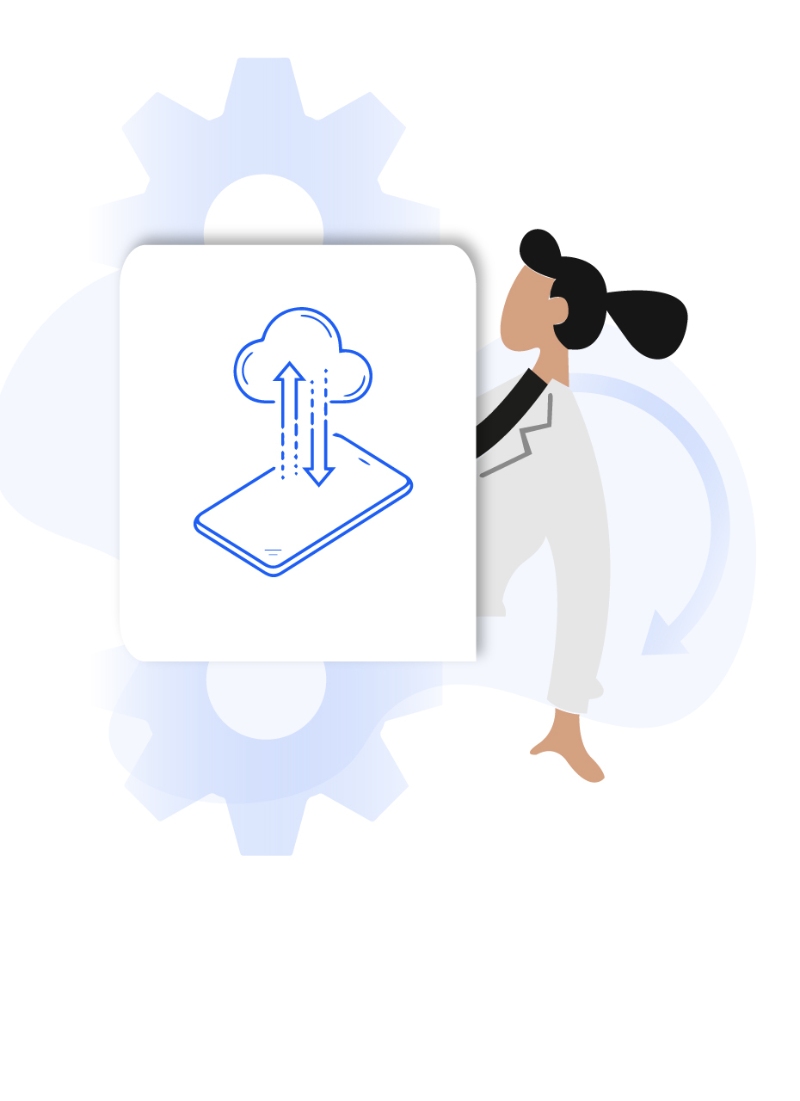
For the past few years now, technology transformation hasn’t been just a buzzword. As per a Gartner forecast, end-user spending on public cloud services is expected to reach $482 billion in 2022. All kinds of businesses - whether large scale or small scale- have started adopting digital innovation to increase their productivity. SaaS (Software as a service) solutions are among those IT segments that have witnessed massive spurts in growth. SaaS models work on a subscription basis and are centrally situated on a remote cloud network. These solutions have become the go-to options for organizations for several reasons, including flexibility and affordability.
“Organizations are advancing their timelines on digital business initiatives and moving rapidly to the cloud in an effort to modernize environments, improve system reliability, support hybrid work models and address other new realities compelled by the pandemic.”
~Brandon Medford
Despite the economic slump due to the ill effects of the pandemic on businesses and economies alike, the cloud computing sector continued witnessing a boom period. In the coming years too, the economic, societal, and organizational impact of the pandemic will continue to drive digital innovation with SaaS as the underlying force. SaaS solutions will empower the hybrid workforce via fostering collaboration, remote work, and digital services.
Businesses are adopting and adapting to their processes using SaaS solutions for several uses:
#1 The focus on environmental sustainability
#2 Remote work
#3 Online education
#4 Artificial Intelligence (AI) and Virtual Reality (VR) integration
#5 Increase in online payments, etc.
The great thing about SaaS is one need not be a developer or an IT expert to use it. This feature is a game-changer compared to the traditional software model used before the emergence of cloud computing, where users would have to manage, install and upgrade the software themselves on local servers or computers. But, with SaaS, you can simply provision a server in the cloud, and in a couple of hours, you will have your software or application ready for use.
Some key examples of SaaS solutions would be:
#1 The email client you use, such as Gmail, the applications
#2 The tools you have on your computers such as Microsoft Office 365 or Adobe Creative Cloud, or
#3 Even when you jam using your favorite music streaming service, you use SaaS.
SaaS provides productivity apps over the internet and is utilized in many business operations today. Unlike our other cloud computing service models, SaaS is at the top of the IT stack and has the highest level of abstraction. This means the cloud service provider will provide and maintain all these layers for you in the stack.
SaaS vs. Other Software
Out of the three big cloud computing models, i.e., SaaS, PaaS (Platform as a Service), and IaaS (Infrastructure as a Service), Startups and SMBs outsource a lot of their processes to save infrastructural costs, SaaS among them is the most popular and commonly used outsourced service. Whether as a business or a consumer, you are liable to come across SaaS daily.
Back in 2015, the public markets had started to get comfortable with SaaS. If you look at any past data, you will notice that most of the IT budget went into SaaS, up to 30-40%, which no one had anticipated. These notable trends have created many SaaS companies, doing a billion in annual recurring revenue (ARR).
Why Should Startups Opt for SaaS?
Low entry cost:
Since it's completely based on software, hardware requirements are drastically reduced in the initial development. Using a SaaS model allows the software deployment time to be reduced from several weeks to a few minutes. It offers higher strategic value in comparison to on-site software deployments.
Pre-calculated cost:
Software prices can be acknowledged when deciding on a purchase with little or no fluctuations.
Scalability:
The industry is scalable due to the demand for software. Reciprocally, the users can address their varied business demands due to the wealth of enterprise solutions present in the market currently.
Maintenance:
No additional charges need to be spent on maintenance, as it's taken care of by the software provider. Additionally, SaaS vendors will keep the software updated via pushing feature improvements, security updates, and bug fixes.
Global reach:
As per ReportLinker, the market has a compound annual growth rate (CAGR) of 20.8%. SaaS can effectively deliver the necessary functionalities to the end-users with practically zero waiting time or hassles of passing through layers of organizational protocols. This adds to the popularity of SaaS solutions for every kind and scale of organization.

Like many technology companies, SaaS startups have gained an advantage over the pandemic. This has immensely increased the digital adoption rate across various industries and has attracted many new users from sectors like health care, manufacturing, and real estate.
As the world moves towards digitization, the need for software solutions such as SaaS is driving huge demand for the subscription-based pricing model to satisfy the ever-growing IT needs. Startups usually suffer from budgetary constraints and the incompetency to develop operational software from scratch. SaaS vendors can cater to startup-specific needs keeping the scale and budget in mind. Also, as Startups and SMBs work on a limited number of projects, they are required to plan for their small business and use a limited number of products. With time, as the processes scale, the software requirements increase. With the SaaS subscription model, startups can avoid issues resulting from shadow IT and invest in only those products as are necessary.
Currently, the global SaaS market is growing at 18% each year. Nearly every organization and startup would have deployed SaaS solutions by 2021, and these numbers will increase in 2022. SaaS models will undoubtedly be the agile, modern solutions that will continue driving and automating processes at startups and SMBs in the future.


